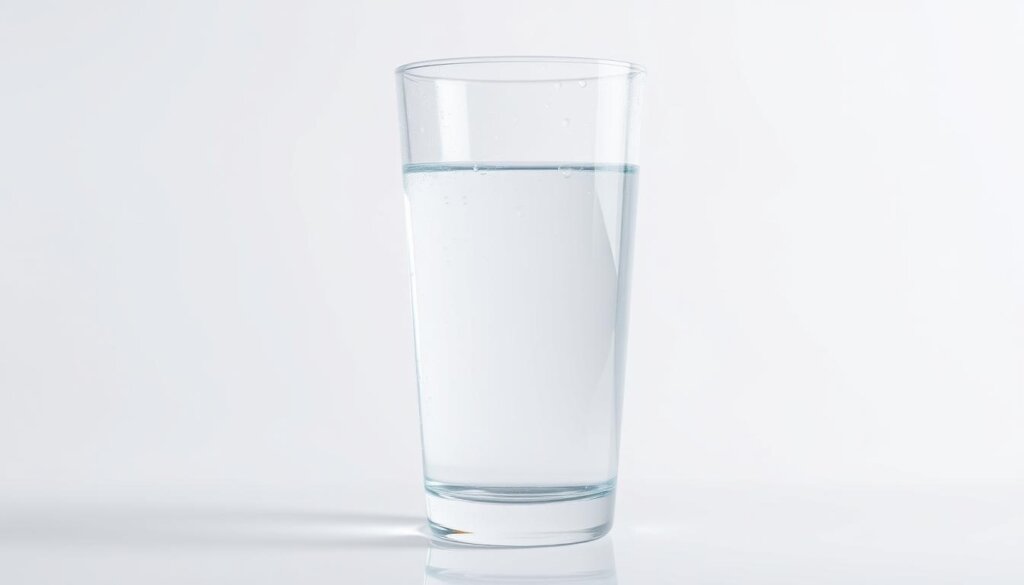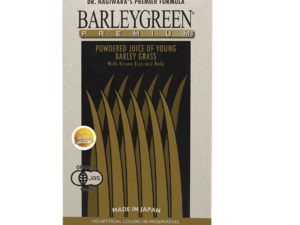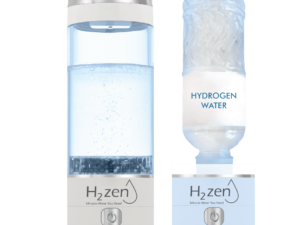Surprising fact: a one-unit shift on the pH scale equals a tenfold change in acidity or alkalinity, and small shifts can alter taste and disinfection performance.
This guide explains how that simple number links to everyday concerns about tap water, bottled options and home systems in Malaysia.
Readers will learn why municipal supplies often sit near neutral, how reverse-osmosis or distilled water tends to be lower, and why some bottled brands label alkaline options higher on the scale.
Wellness Group helps Malaysians test and improve water quality, with WhatsApp support at +60123822655. Business hours are Monday–Friday 9:30 am–6:30 pm and Saturday–Sunday 10 am–5 pm.
Key Takeaways
- pH measures acidity/alkalinity on a 0–14 scale; each unit is a tenfold change.
- Typical tap water averages near 7.5; RO or distilled often runs lower.
- pH affects taste and treatment efficacy but is an indicator, not a standalone health limit.
- Simple home tests can flag problems that may point to metals or scaling.
- Wellness Group offers local guidance and product help via WhatsApp during posted hours.
Understanding pH in Water: The Science, Scale, and Why It Matters
pH acts like a chemical thermostat: tiny changes alter how water interacts with pipes, treatment chemicals and taste. This short section explains the scale, the key ions and real-world examples so readers can place their own reading in context.
The scale and the chemistry
pH equals the negative logarithm of hydrogen ion concentration. The scale runs 0–14 and is logarithmic: a one-unit shift means a tenfold change in hydrogen ion level. More H+ makes a liquid acid; more OH- makes it alkaline.
Typical levels you’ll see
- Tap water: ~7.5
- RO or distilled: ~5–7
- Common bottled: 6.5–7.5; alkaline bottles: 8–9
- Ocean: ~8; acid rain: 5–5.5
Why regulators watch this number
EU, WHO and EPA treat pH as an indicator rather than a direct health limit. It affects corrosion, solubility of metals and disinfection efficiency. Changes in color or taste often point to reactions with metals, not pH alone.
For local guidance on reading results and choosing simple test tools, readers in Malaysia can message Wellness Group on WhatsApp at +60123822655 during business hours.
What is the healthiest pH for drinking water?
Guidance from regulators frames a practical band rather than a single target. Public systems commonly aim to keep levels within 6.5 8.5 to protect pipes, preserve taste and help disinfection work well.

Many bottled brands sit near neutral; some labeled alkaline bottles run higher. EU and EPA guidance and WHO notes show this band keeps corrosive acidity low while limiting scaling on the high side.
Beyond any number, the sensible goal is a stable range that supports overall quality. A reading slightly outside does not mean immediate danger, but it should trigger testing for contaminants and metals because pH affects how substances and ions behave.
- Keep municipal and household supplies steady rather than chasing extremes.
- Taste complaints—sour or metallic at low levels, bitter or soapy at high—are valid signals to check the supply.
- For tailored advice and help keeping household water in the preferred band, Malaysians can contact Wellness Group on WhatsApp at +60123822655 during business hours.
How pH affects drinking water quality, taste, and household systems
A modest change in acidity or alkalinity often shows up first in flavor and plumbing performance. Small shifts can alter taste, speed corrosion, or encourage scale that reduces flow.
Taste and aesthetics
Lower readings tend to give a sour or metallic edge that makes tea and coffee taste off. Higher readings can taste bitter or soapy and make beverages less pleasant.
Corrosion and scaling
Acidic water can accelerate corrosion and release metal ions such as lead or copper from pipes. That corrosion causes colored stains and raises concerns about contaminants.
By contrast, alkaline conditions promote scale buildup that narrows pipes and harms appliances over time.
Disinfection efficiency
Chlorine works best below about pH 8. At roughly pH 6.5 about 92% of active disinfecting species are present, dropping sharply near pH 8.5. A high level can cut disinfection power and let microbes slip through.
Signals of trouble and simple steps
Rusty red, blue-green, or white stains, cloudy color, or odd odors often mean the supply is interacting with fixtures. Persistent issues call for testing of level and metals before big fixes.
- Quick fixes: remineralizing RO, anti-scale media, or point-of-use filters.
- When to get help: if metallic tastes or stains persist, message Wellness Group on WhatsApp at +60123822655 for tailored advice during business hours.
Testing your water’s pH at home and what your results mean
A quick check with strips or a pen meter helps households spot shifts in level before they become bigger problems.
Quick checks:
- Use litmus or multiparameter strips for a fast color-based read.
- Pen-style digital meters give a precise numeric level and are easy to carry.
- Always sample from a cold tap after flushing one minute for a representative result.
Interpreting results and immediate steps
If the reading lands within 6.5 8.5, most households can relax and focus on taste and routine maintenance.
If results fall outside that range, repeat the test to rule out error. Then contact the local water supply utility to request lab checks for contaminants and metals.
“Visible staining or a metallic taste often points to corrosion; utilities typically monitor and adjust chemistry as part of routine quality control.”
Practical stops and longer-term fixes
Simple stopgaps include point-of-use pitchers (e.g., Brita) or under-sink filters (e.g., PUR) to improve flavor and odor while the supplier investigates.
Households on private wells should run broader tests—metals, microbes and hardness—since the owner manages treatment and maintenance.
| Test option | Speed | Best use |
|---|---|---|
| Multiparameter strips | Fast | Quick spot checks, low cost |
| Handheld digital meter | Moderate | Precise level tracking and trend logs |
| Laboratory analysis | Slow | Confirm contaminants, heavy metals, official records |
Keep simple habits: change cartridges on time, calibrate meters per instructions, and retest after plumbing work or seasonal shifts.
Need help choosing a test kit or filter? Message Wellness Group on WhatsApp at +60123822655, Monday–Friday 9:30 am–6:30 pm and Saturday–Sunday 10 am–5 pm.
Malaysia context: typical sources, treatment processes, and practical fixes
Many Malaysian communities rely on surface catchments whose chemistry and taste vary with monsoon runoff and upstream land use.
Surface vs groundwater tendencies
Surface sources often sit between pH 6.5–8.5 but can dip after heavy rains or upstream activity. Groundwater usually ranges a bit wider, roughly 6.0–8.5, depending on local geology.
Managing acidity and alkalinity at scale
Utilities blend sources and run treatment steps to keep disinfectants working and reduce corrosion or scale. Common approaches include remineralization and ion exchange to balance ions and minerals in supply.
When to upgrade a home system
Households using RO should consider a remineralization cartridge to restore minerals and a small anti-scale stage to protect heaters and fixtures. If metal tastes or stains appear, test for metals and check piping before buying a larger system.
- “Test first, then fix.”
- Do spot checks after seasonal shifts to spot changes in level.
- For Malaysia-specific advice and product options, message Wellness Group on WhatsApp at +60123822655 during business hours.
Alkaline water claims vs current research
Marketing often promises broad gains from alkaline options, yet rigorous studies remain limited. People see claims about better hydration, anti-ageing, or protection from chronic disease. Many of these remain unproven or supported by small trials.

What studies suggest and their limits
Small trials over the years show hints of benefit. A 2012 clinical trial linked alkaline fluid to symptom relief in reflux for some patients. Earlier work from 2001 reported effects in people with high blood pressure, diabetes, and high cholesterol.
Some papers also note that high-alkaline, electrolyzed fluid may help recovery after intense exercise. Yet most studies are small, short, or use specific machines. That limits how broadly results apply.
Why the body regulates internal pH
The human body keeps internal acidity tightly controlled. Stomach acid breaks down food, lungs remove CO2, and kidneys fine-tune electrolytes and acids.
Because of these systems, drinking slightly alkaline liquids rarely changes blood chemistry. Experts caution that sweeping health claims about large pH shifts lack strong support.
“Most benefits attributed to alkaline products need larger, better-designed trials before they can be considered reliable.”
Practical view: choosing slightly alkaline options for taste is fine, but focus first on safe content and tested quality. For balanced advice or product guidance in Malaysia, message Wellness Group on WhatsApp at +60123822655 during posted hours.
| Claim | Evidence strength | Notes |
|---|---|---|
| Reflux relief | Low–Moderate | One small 2012 trial; needs replication |
| Post-exercise hydration | Low | Some studies on electrolyzed fluids; mixed methods |
| Chronic disease prevention | Very low | Early papers from 2001 are inconclusive and limited in size |
Conclusion
A clear, practical focus helps households keep tap supplies safe and pleasant to drink each day.,
The best approach is to treat overall water quality as the priority and aim to keep the level near 6.5 8.5. That range supports taste, protects pipes and keeps disinfection effective.
If odd color, stains or a change in taste appears, test for contaminants and metals first. Simple fixes — gentle remineralization after heavy filtration, an anti-scale stage, or a small filter — often solve the issue without major overhaul.
For Malaysian readers seeking testing kits, filters, or personalised advice, message Wellness Group on WhatsApp at +60123822655 (Mon–Fri 9:30 am–6:30 pm; Sat–Sun 10 am–5 pm). Learn about related options like hydrogen water for cleansing when picking a system.
FAQ
What range do public health agencies recommend for safe drinking pH?
Most regulators, including the U.S. Environmental Protection Agency and the World Health Organization, set a recommended supply range near 6.5–8.5. That span balances taste, corrosion control and disinfection effectiveness for municipal systems.
How does the pH scale describe acidity and alkalinity?
The scale runs 0–14 and works on a logarithmic basis. Lower numbers mean more hydrogen ions and greater acidity; higher numbers mean more hydroxyl ions and greater alkalinity. Neutral falls at about 7.
Which typical waters sit at different pH points?
Tap water often lands between 6.5 and 8.5; distilled or RO-treated water can be near neutral or slightly acidic; many bottled alkaline brands claim levels above 8.0; seawater tends to sit around 8.1. Local source and treatment shape those values.
Why monitor pH if it’s not a direct health limit?
pH acts as an indicator parameter. It signals risks to plumbing, affects taste, and influences how well disinfectants like chlorine work. Out-of-range readings prompt testing for metals, microbial risk or treatment issues.
How does pH change taste and appearance?
Acidic water can taste sour or metallic, while alkaline water may seem bitter or soapy. Visible signs like discoloration, staining, or unusual odors often accompany extreme acidity or alkalinity and suggest corrosion or contamination.
What plumbing problems arise from wrong pH levels?
Low pH increases corrosion risk, which can leach lead, copper or iron from pipes. High pH promotes scale buildup and clogged fixtures. Both scenarios shorten appliance life and can raise contaminant levels.
How does pH affect disinfection like chlorination?
Chlorine’s germ-killing form (hypochlorous acid) works best at lower pH. As pH rises above about 8, disinfectant effectiveness drops, so utilities monitor pH to keep microbial protection reliable.
How can someone test household water pH?
Quick home checks use litmus paper or pH strips for a rough reading. Handheld digital meters give more accurate numbers. For concerning results, a certified lab test for metals, bacteria and other contaminants is advised.
What should a homeowner do if readings fall outside recommended limits?
First contact the water supplier or local authority. Next, test for dissolved metals and microbial indicators. Short-term fixes include point-of-use filters or pitchers certified for specific contaminants; longer-term options include neutralizing filters, remineralizing stages after RO, or whole-house treatments.
How does Malaysia’s water context influence pH issues?
Surface sources often vary seasonally and may shift toward acidity after heavy rains, while groundwater tends to be more stable but can carry minerals that raise alkalinity. Local treatment plants use pH adjustment, coagulation and disinfection to meet standards, and homeowners may add remineralization after RO systems.
When is upgrading home systems advisable in Malaysia?
Consider an RO unit with remineralization if municipal taste or hardness is a concern, or an anti-scale device when scale clogs appliances. If corrosion or metal leaching appears, seek a full water audit and targeted filtration certified for lead or iron removal.
Do alkaline bottled waters deliver proven health benefits?
Some small studies suggest short-term benefits for acid reflux or post-exercise recovery, but evidence is limited and inconsistent. The body maintains blood pH through the stomach, lungs and kidneys, so long-term systemic change from drinking alkaline brands lacks strong scientific support.
Can drinking slightly alkaline liquid harm people?
For most healthy individuals, modestly alkaline beverages cause no harm. People with kidney disease or those taking certain medications should consult a clinician before regular use of high-alkalinity products or aggressive supplementation.
How often should one recheck household pH?
Test annually for routine monitoring and after any plumbing work, treatment change, or sudden taste/appearance shifts. Increase frequency if using private wells, during seasonal changes, or when local advisories report source problems.






